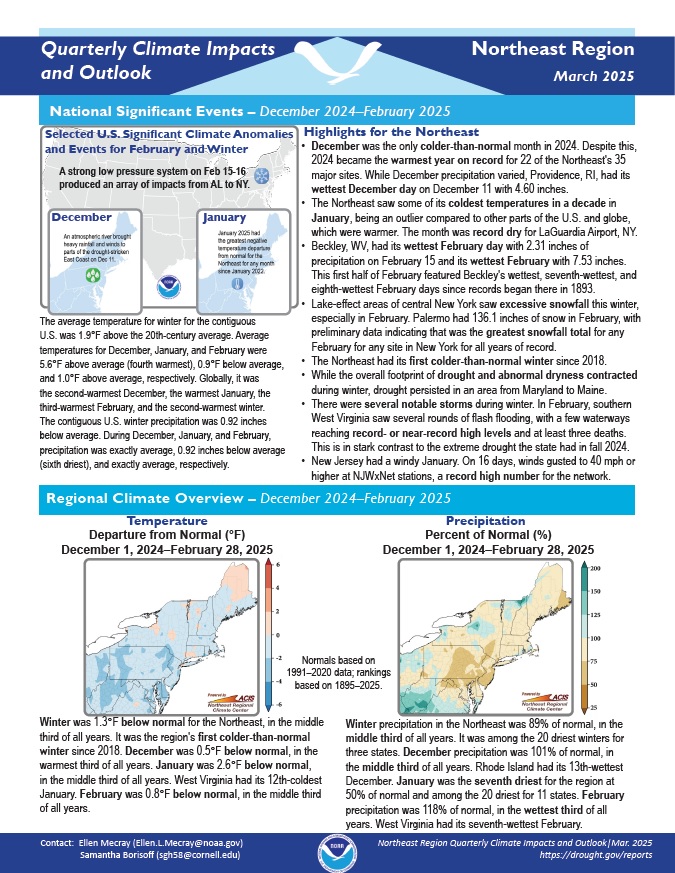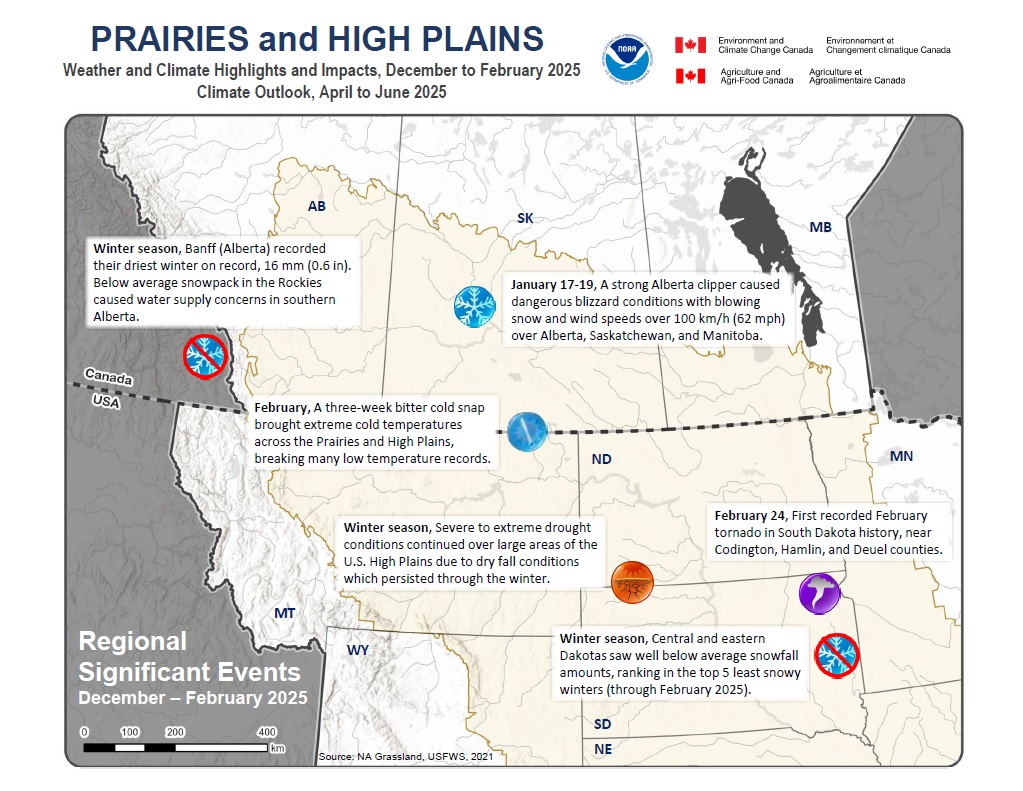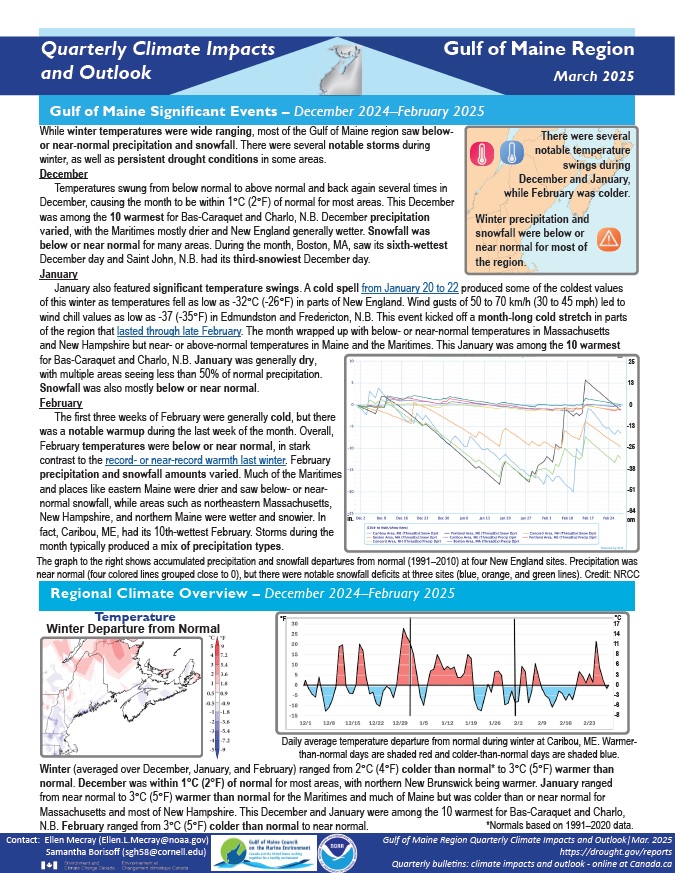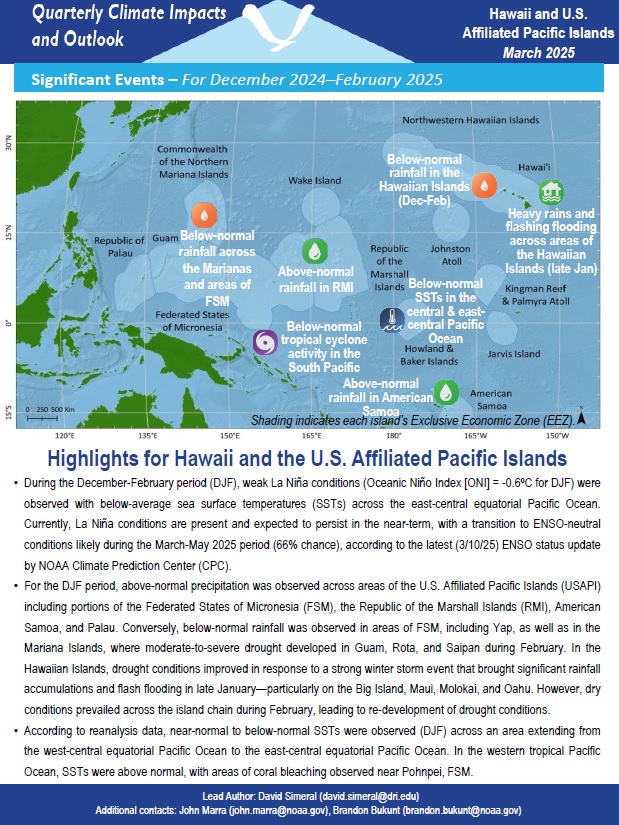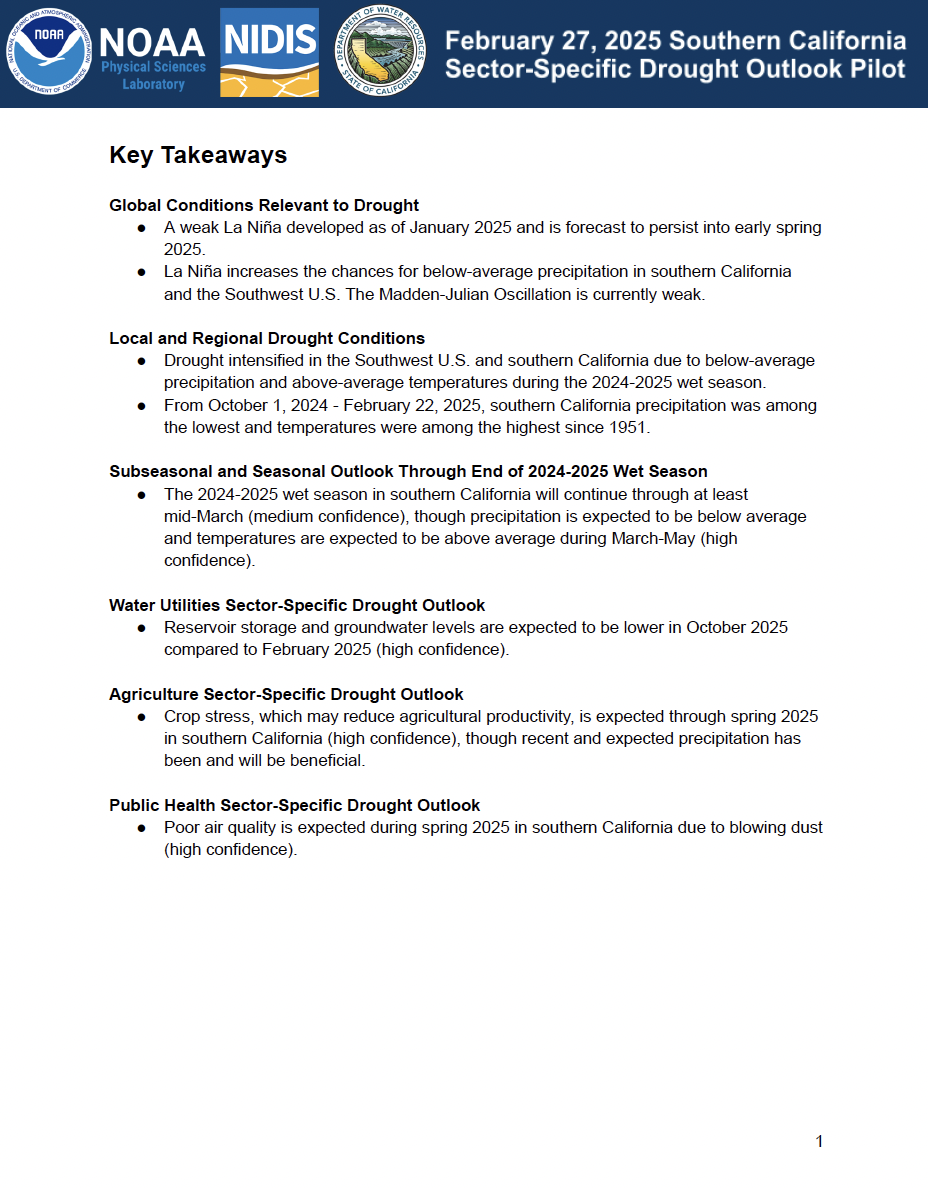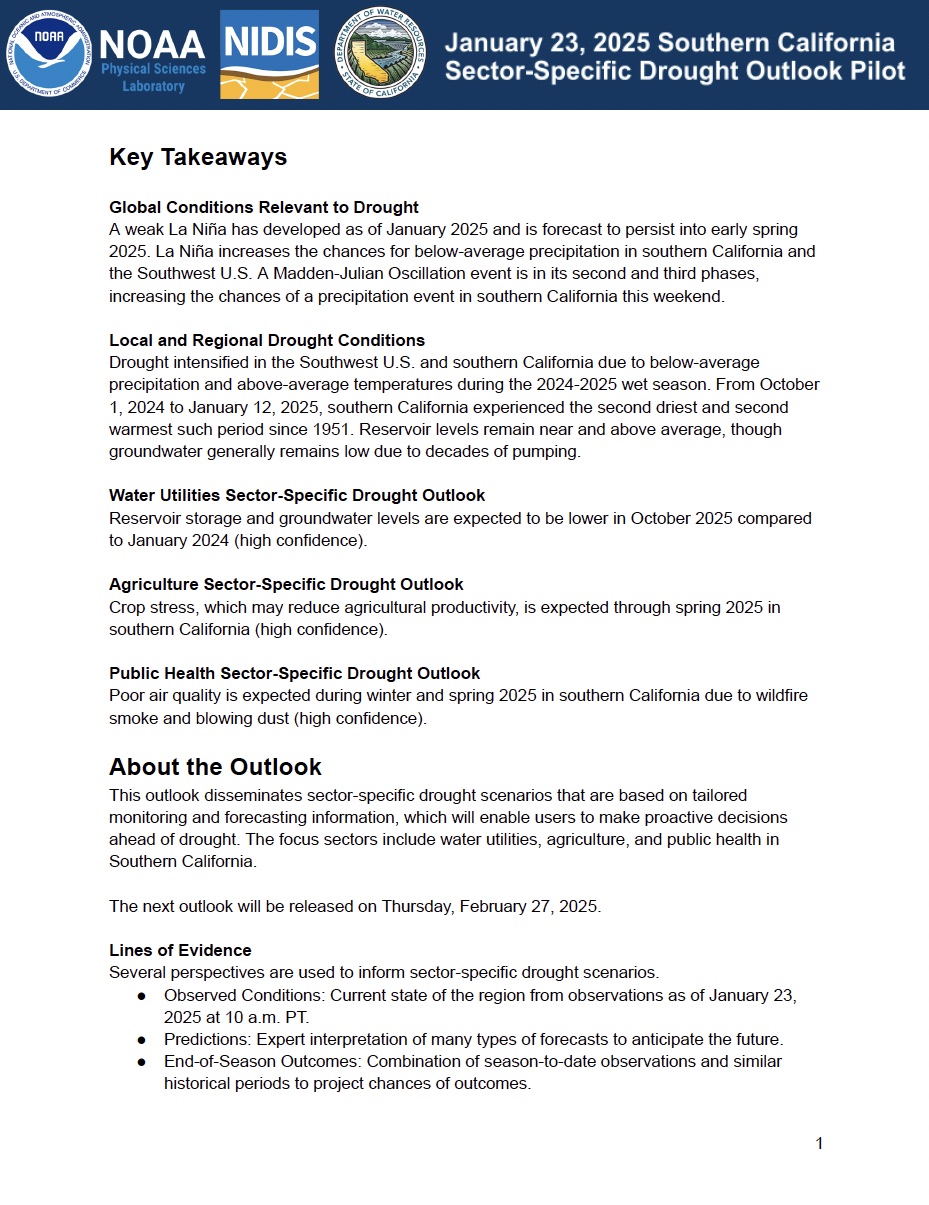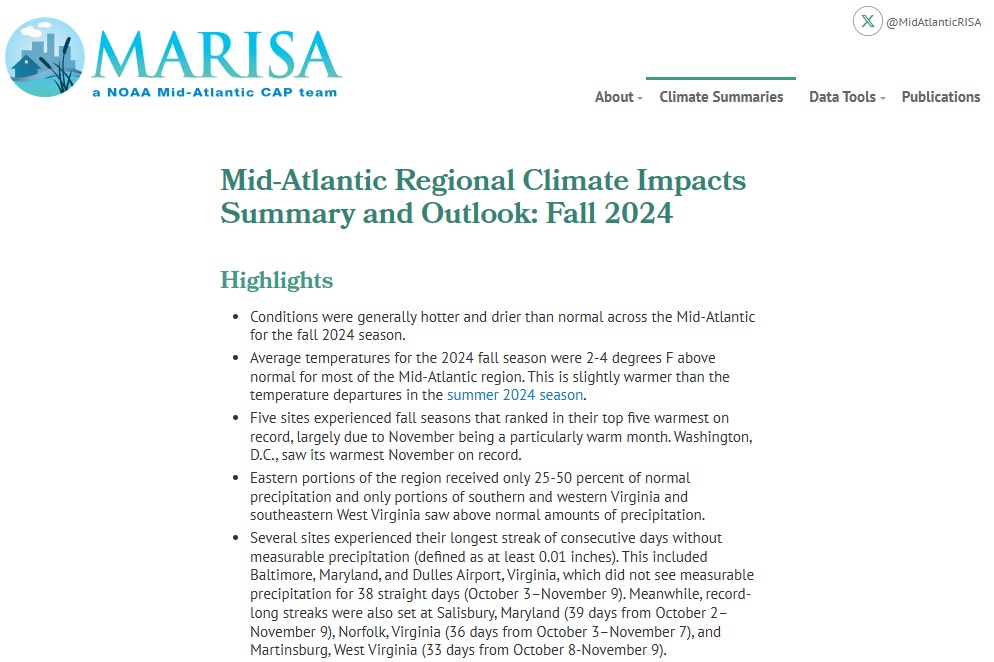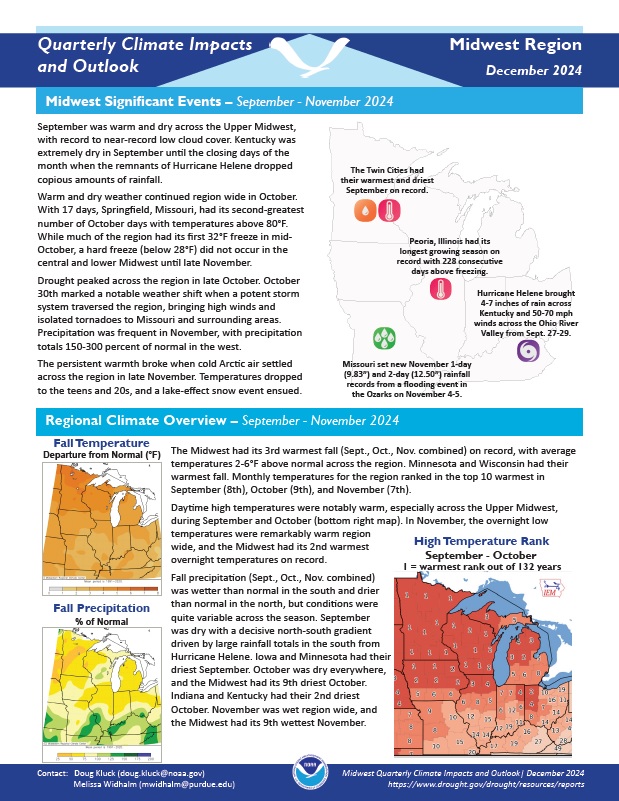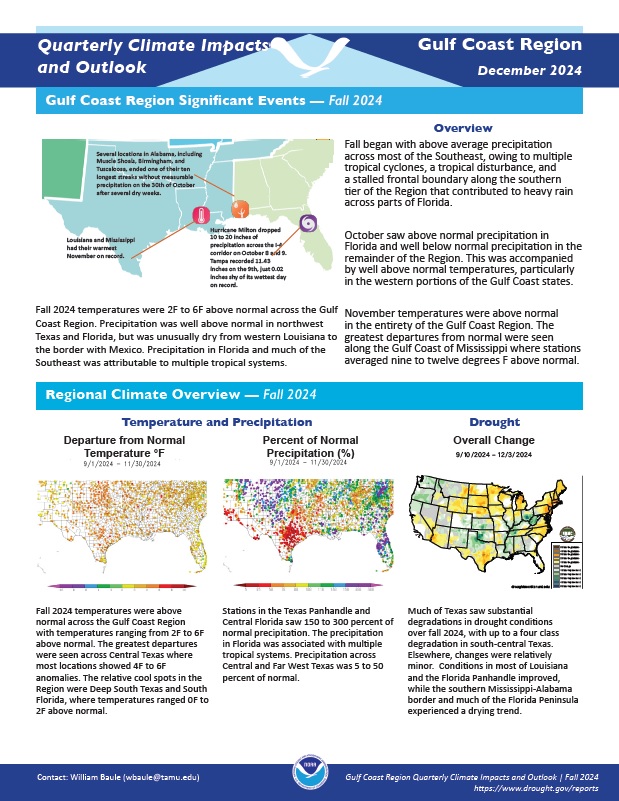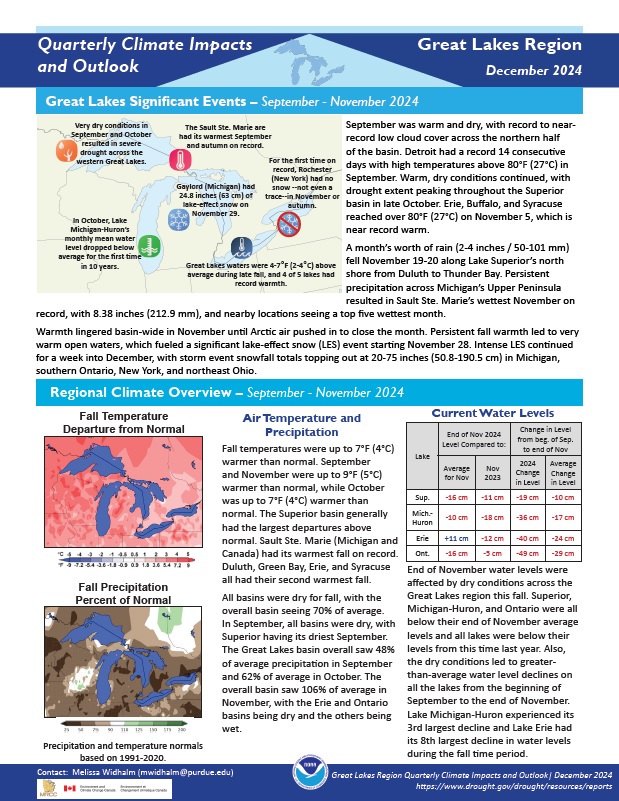Quarterly Climate Impacts and Outlook for the Northeast Region for December 2024–February 2025. Dated March 2025.
Winter was 1.3°F below normal for the Northeast, in the middle third of all years. It was the region's first colder-than-normal winter since 2018. Winter precipitation in the Northeast was 89% of normal, in the middle third of all years. It was among the 20 driest winters for three states.
Quarterly Climate Impacts and Outlook for the Canadian and U.S. Prairies and High Plains for December 2024–February 2025, with an outlook for April–June 2025. Dated March 2025.
Despite warm temperatures in December, a frigid February led to below-average seasonal temperatures across the central portion of the region. Very dry conditions were observed throughout southwestern Alberta and much of the High Plains. Areas in South Dakota, Minnesota, Wyoming, and Alberta received less than 45% of their normal precipitation this winter.
Quarterly Climate Impacts and Outlook for the Gulf of Maine Region for December 2024–February 2025. Dated March 2025.
Winter ranged from 2°C (4°F) colder than normal to 3°C (5°F) warmer than normal. Precipitation for winter ranged from 50% of normal to 175% of normal.
Quarterly Climate Impacts and Outlook for the Pacific Region for December 2024–February 2025. Dated March 2025.
NOAA’s National Integrated Drought Information System (NIDIS) and Physical Sciences Laboratory are partnering with the California State Climatologist/California Department of Water Resources, NOAA’s National Weather Service and National Centers for Environmental Information, and the California-Nevada Adaptation Program (a NOAA CAP team) on the Sector-Specific Drought Early Warning Outlook – Southern California Pilot.
NOAA’s National Integrated Drought Information System (NIDIS) and Physical Sciences Laboratory are partnering with the California State Climatologist/California Department of Water Resources, NOAA’s National Weather Service and National Centers for Environmental Information, and the California-Nevada Adaptation Program (a NOAA CAP team) on the Sector-Specific Drought Early Warning Outlook – Southern California Pilot.
Quarterly Climate Impacts and Outlook for the Mid-Atlantic Region for September–November 2024. Dated December 2024.
Average temperatures for the 2024 fall season were 2-4 °F above normal for most of the Mid-Atlantic region. Eastern portions of the region received only 25%–50% of normal precipitation. Only portions of southern and western Virginia and southeastern West Virginia saw above-normal precipitation.
Quarterly Climate Impacts and Outlook for the Midwest Region for September–November 2024. Dated December 2024.
The Midwest had its 3rd warmest fall on record, with average temperatures 2-6 °F above normal across the region. Minnesota and Wisconsin had their warmest fall. Monthly temperatures for the region ranked in the top 10 warmest in September (8th), October (9th), and November (7th). Fall precipitation was wetter than normal in the south and drier than normal in the north, but conditions were quite variable across the season.
Quarterly Climate Impacts and Outlook for the Gulf Coast Region for September–November 2024. Dated December 2024.
Fall temperatures were above normal across the Gulf Coast Region with temperatures ranging from 2 °F to 6 °F above normal. Stations in the Texas Panhandle and Central Florida saw 150%–300% of normal precipitation. The precipitation in Florida was associated with multiple tropical systems. Precipitation across Central and Far West Texas was 5%–50% of normal.
Quarterly Climate Impacts and Outlook for the Great Lakes Region for September–November 2024. Dated December 2024.
Fall temperatures were up to 7 °F (4 °C) warmer than normal. All basins were dry for fall, with the overall basin seeing 70% of average precipitation.


